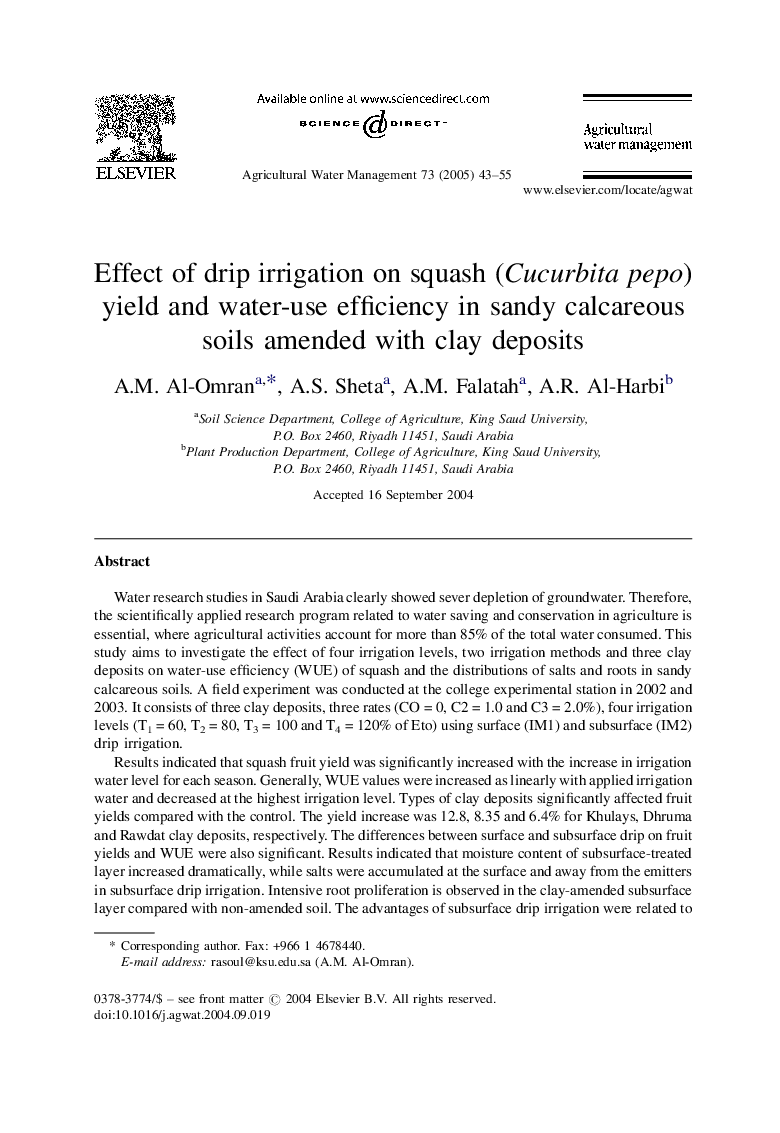| Article ID | Journal | Published Year | Pages | File Type |
|---|---|---|---|---|
| 9467364 | Agricultural Water Management | 2005 | 13 Pages |
Abstract
Results indicated that squash fruit yield was significantly increased with the increase in irrigation water level for each season. Generally, WUE values were increased as linearly with applied irrigation water and decreased at the highest irrigation level. Types of clay deposits significantly affected fruit yields compared with the control. The yield increase was 12.8, 8.35 and 6.4% for Khulays, Dhruma and Rawdat clay deposits, respectively. The differences between surface and subsurface drip on fruit yields and WUE were also significant. Results indicated that moisture content of subsurface-treated layer increased dramatically, while salts were accumulated at the surface and away from the emitters in subsurface drip irrigation. Intensive root proliferation is observed in the clay-amended subsurface layer compared with non-amended soil. The advantages of subsurface drip irrigation were related to the relative decrease in salt accumulation in the root zone area where the plant roots were active and water content was relatively higher.
Related Topics
Life Sciences
Agricultural and Biological Sciences
Agronomy and Crop Science
Authors
A.M. Al-Omran, A.S. Sheta, A.M. Falatah, A.R. Al-Harbi,
